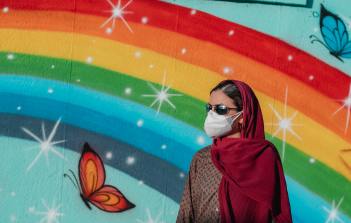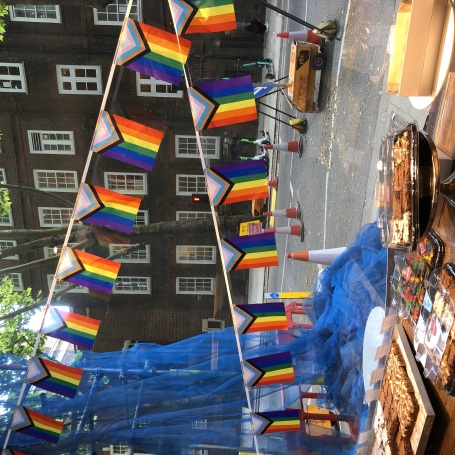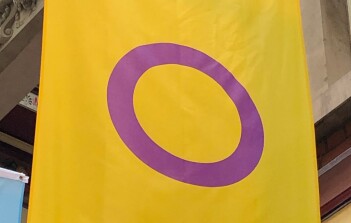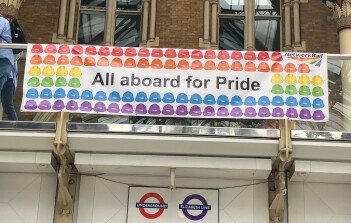
General
Pride in the workplace

This article is a follow up from our previous blog of May 2020 ‘Coming Out in the Workplace’ which highlighted that when employees can bring their true authentic selves to work they are more productive and engaged. ‘Why I kept my sexuality a secret at work’ published on the BBC News website on 29 June 2022, is a poignant illustration of that process from aircraft engineer Rob who set up a Pride network to support LGBT staff members.
In this blog, we will try to look a little deeper at the general policy context for LGBTQ+ at work and at how workplaces can improve how LGBTQ+ people feel included, safe, and proud to bring their true self to work.
First it is important to remember that sexual orientation and gender reassignment are protected characteristics under the UK Equality Act 2010. You are protected against discrimination in all sorts of context including at work. It is also important to note that under the Equality Act 2010, you can do something voluntarily to help people with a protected characteristic. This is called ‘positive action’. Taking positive action is legal if people with a protected characteristic are at a disadvantage; have particular needs; are under-represented in an activity or type of work.
We must also note the United Nations Standards of Conduct for Business, published in September 2017, which is aimed at tackling discrimination against Lesbian, Gay, Bi, Trans, & Intersex people. Of the five standards that are defined, it is most interesting to note the fifth one: ‘Act in the Public Sphere’. In other words, companies and businesses are encouraged to use their leverage to contribute to stopping human rights abuses in the countries within which they operate. The gold standard is to be pro-active! They subsequently published a tool which allows workplaces and employers to analyse how they are doing against the Standards and supports them in how to close that gap: UN LGBTIQ+ Standards Gap Analysis Tool.
In February 2021, The Chartered Institute of Personnel and Development (CIPD) published a research report entitled ‘Inclusion at work: Perspectives on LGBT+ working lives’. Quoting from their press release web page we have the following findings:
- Over 40% of LGB+ workers experienced a conflict at work over a twelve-month period, compared with 29% of heterosexual workers. Conflicts typically involve being undermined/ humiliated or discriminatory behaviour aimed at a protected characteristic.
- More than half (55%) of trans workers surveyed said they had experienced conflict over a twelve-month period and at least 50% of these conflicts were unresolved. 12% of trans workers said they have experienced unwanted sexual attention at work and 2% have experienced sexual assault.
- Trans workers were least likely to feel psychologically safe (able to be accepted, valued, and able to voice concerns) at work. Almost 1 in 5 (18%) said they felt psychologically unsafe at work compared with 16% of LGB+ workers and 10% of heterosexual workers.
- LGB+ and heterosexual workers reported similar job satisfaction levels with around 66% of both groups saying they felt somewhat to very satisfied at work. However, a slightly higher proportion of LGB+ workers felt somewhat to very dissatisfied with their job, compared with heterosexual workers (19% vs 15%). Just over 50% of trans workers reported feeling somewhat to very satisfied with their job and a third (33%) said they felt somewhat to very dissatisfied.
The report makes recommendations to employers. In particular, it highlights the need to treat people as individuals: “When creating inclusive practices employers must recognise the unique challenges faced by LGBT+ workers. For instance, recognising that a lesbian will face very different challenges to a trans person at work. Employers must treat people as individuals rather than assuming that any general measures to address LGBT+ as a homogenous group will sufficiently meet a spectrum of diverse needs. If we are to truly celebrate and support individuality we must start with the individual.”
The importance of LGBTQ+ role models within the workplace and of good examples of employers who have improved LGBTQ+ equality is paramount to making progress in this area. Each year, Stonewall publishes a list of the best 100 employers for LGBTQ+ people. Many companies and employers work towards their application to the scheme by using the UK Workplace Equality Index as a tool to measure their achievements and progress on LGBTQ+ equality. If they are a member of Stonewall’s Diversity Champions Programme they receive support and detailed feedback on their progress.
This process also highlights the crucial importance of straight allies who work together with LGBTQ+ colleagues in achieving better inclusion. How can I show I am an ally? One simple thing is to have the following motto after your work email signature ‘I am an ally’ together with a pride flag and put your pronouns after your signature. Check other good practices in the article ‘how to be an LGBTQ+ ally in the workplace’ published on the Stonewall website.
You do not need to be a large employer to make the first step to improve the experience of LGBTQ+ colleagues. A simple thing like acknowledging Pride with flags in your shop (like in the photo above) can go a long way to make all colleagues feel included if it comes from a sincere wish to improve LGBTQ+ experience in the workplace.
Some are sceptical of the proliferation of rainbows. Tony McCaffery, founder of Diversity Scotland, wrote in an article in the Scotsman that ‘Unless the corporate allyship is based in genuine action-orientated inclusion, the pretty rainbow logos just feel like lip service and another marketing ploy’. That may certainly be a concern, but isn’t the visibility of Pride in the public sphere a positive move?
Image on this page: photo taken from inside a cake shop looking out to the street through lines of progress pride flags bunting attached to the shop window.
First thumbnail image: a banner in a train station in London saying ‘All aboard for Pride’ on a background of rainbow coloured construction helmets.

